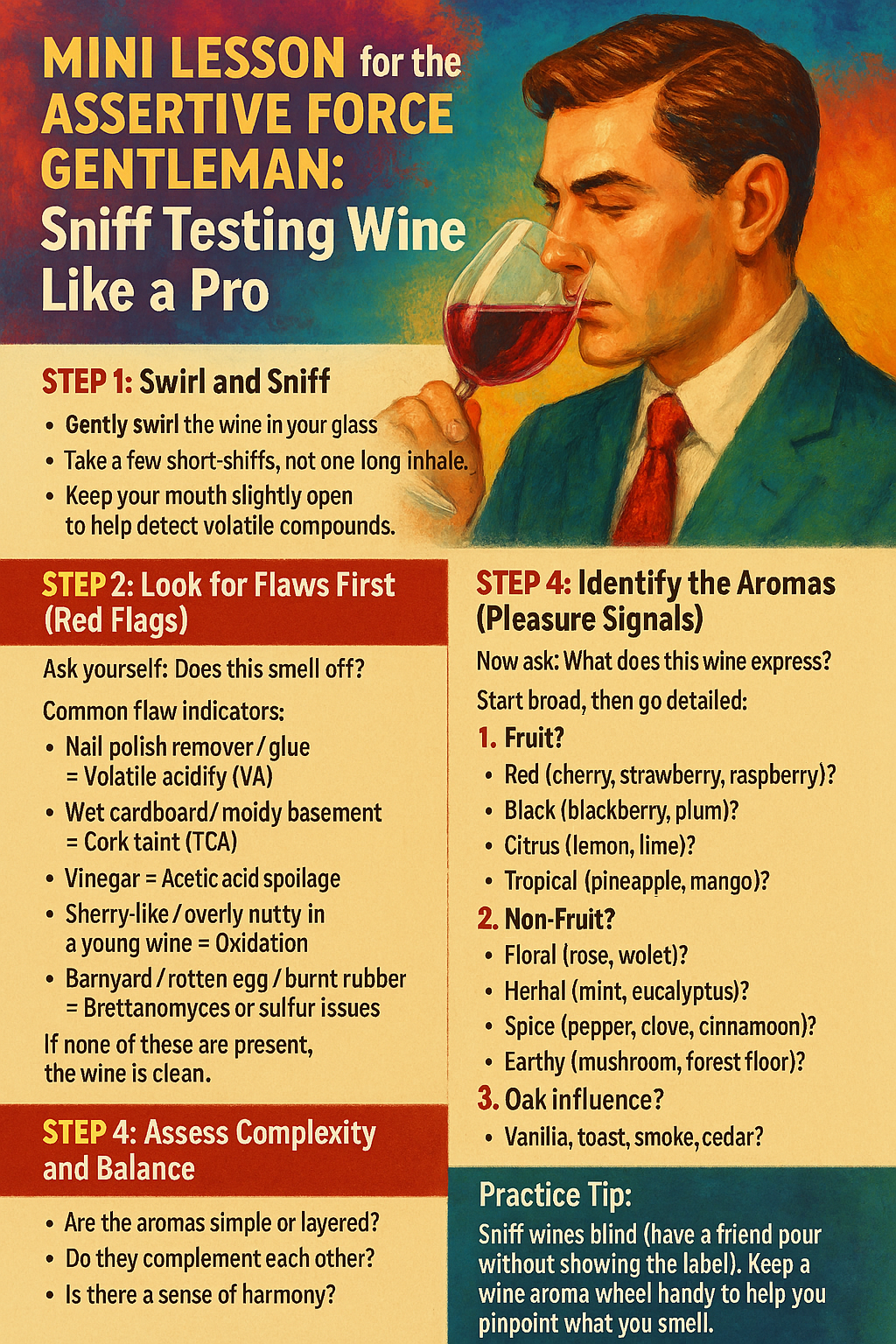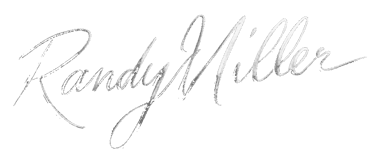No man drifts upward
Elevate Your Wine Tasting Skills with Sniff Testing
Discover the art of wine tasting with our mini lesson on sniff testing. Cultivate your taste, precision, and presence at the table, perfect for aspiring high-value gentlemen looking to enhance their wine skills.
Randy Miller


Cultivating Taste, Precision, and Presence at the Table
To master the art of wine appreciation is to sharpen your senses, slow time, and anchor yourself in presence. For the aspiring high-value gentleman, wine is not merely a beverage—it is a ceremony of discernment. Sniff testing, when done correctly, reveals not just the soul of the wine, but the discipline of the man holding the glass.
This mini lesson is not about becoming a sommelier—it’s about sharpening your perception, exercising discrimination, and commanding the moment with quiet refinement.
Step 1: Swirl and Sniff – The First Act of Presence
Before anything, still yourself. Then:
Swirl gently: You are not agitating—you’re awakening. The swirl helps volatilize the aromatic compounds. Think of it as uncaging the spirit of the wine.
Take short sniffs, not one long drag. Too long and you dull your nose.
Mouth slightly open: This opens your retronasal pathway, helping you decode the full aromatic spectrum.
This step is a ritual of attunement. You’re not just smelling—you’re listening to the wine.
Assertive Force Insight: The act of swirling teaches control. The act of sniffing teaches receptivity. Master both—on the nose and in life.
Step 2: Look for Flaws – Identify Red Flags Early
Before romance, there is vetting. Even the most elegant bottle may hide corruption. You must be the judge.
Ask: Does this smell off?
Here’s your red flag code:
Nail polish remover / glue = Volatile Acidity (VA) – Too much vinegar-like tang. Spoilage.
Wet cardboard / moldy basement = Cork taint (TCA) – Like a promise ruined by rot.
Vinegar = Acetic spoilage – Uncontrolled fermentation.
Sherry-like in a young wine = Oxidation – Oxygen got in, and the wine gave up.
Barnyard / rotten egg / burnt rubber = Brettanomyces or sulfur issues – Poor hygiene in the cellar.
If none of these appear, the wine is clean—and the conversation may begin.
Assertive Force Insight: In wine, as in life, you must detect flaw before you pursue pleasure. Never commit before you’ve evaluated quality.
Step 3: Identify Aromas – Decode the Pleasure Signals
Now ask: What does this wine express?
Begin broad. Then go precise. You’re not guessing—you’re tracking essence. Your categories:
1. Fruit Aromas – The Signature of the Grape
Red fruits: cherry, raspberry, strawberry (often in Pinot Noir, Grenache)
Black fruits: blackberry, plum, blackcurrant (common in Cabernet, Syrah)
Citrus: lemon, lime, grapefruit (Sauvignon Blanc, Riesling)
Tropical: pineapple, mango, passionfruit (Chenin Blanc, Viognier)
2. Non-Fruit Aromas – The Voice of the Soil and Craft
Floral: rose, violet, honeysuckle – ethereal and fleeting
Herbal: mint, eucalyptus, green pepper – sharp, sometimes savory
Spice: black pepper, clove, cinnamon – often oak-driven or terroir-based
Earth: mushroom, wet leaves, forest floor – especially in Old World wines
3. Oak Influence – The Winemaker’s Signature
Vanilla, toast, cedar, smoke – Aged in oak barrels. A sign of intention and style.
Assertive Force Insight: Naming what you perceive sharpens your cognition. It teaches you to articulate the intangible. That is power.
Step 4: Assess Complexity and Balance – Read the Harmony
Now you ask: Is this wine simple or sophisticated?
Are the aromas layered or linear?
Do the notes clash, or do they converse?
Is there balance between fruit, spice, earth, and oak?
Complex wines feel like well-written poetry. Each sniff reveals a new stanza. This is the wine’s depth—and your own perceptual depth meeting it.
Assertive Force Insight: A refined gentleman trains himself to detect harmony in all things—wine, music, business, conversation. That’s what separates the high-value man from the distracted masses.
Practice Tip: Blind Sniff Training
Blind testing refines honesty in perception.
Have a friend pour without revealing the label.
Use a wine aroma wheel (essential tool).
Journal what you sniff—then compare to the reveal.
Each bottle becomes a lesson in memory, vocabulary, and intuition. Over time, you will stop drinking wine—you will start reading it.
Final Word: Why This Matters for the Assertive Gentleman
This ritual is not about pretension—it’s about presence.
You learn to:
Observe without rushing.
Discern without bias.
Speak about pleasure with accuracy and restraint.
Wine, like a woman, like a business deal, like the world itself, hides its truths until you listen with a trained nose.
So swirl, sniff, and learn.
Because most men drink wine.
But you, high-value gentleman, will master it.
Mindset
Wealth
Legacy
© 2025, All rights reserved upon all original content presented by Randy Miller. Re-use of content within context and link to website is noted within re-use is hereby granted.
